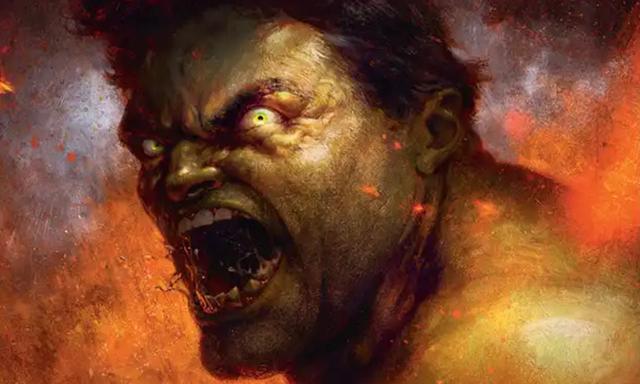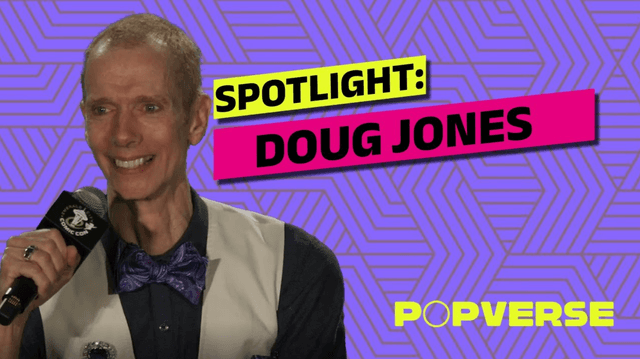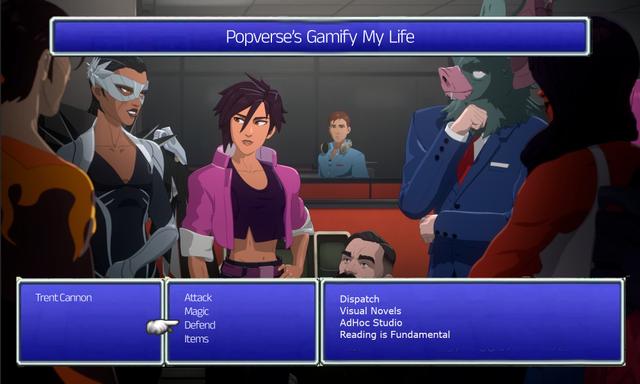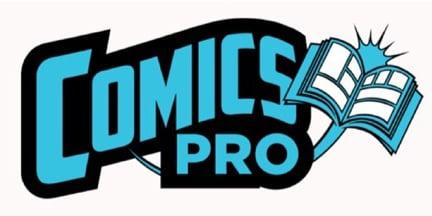If you click on a link and make a purchase we may receive a small commission. Read our editorial policy.
Batman: Dark Patterns feels both impossible and impressive
Batman: Dark Patterns is the comic that proves how to make them like they used to without being old-fashioned or lost in nostalgia

Popverse's top stories
- Is the Supergirl teaser trailer already teasing a Man of Tomorrow connection? Because our Brainiac senses are tingling
- Watch now: Watch as Nickelodeon presents the Avatar: The Last Airbender 20th Anniversary Panel, featuring Dante Basco, Zach Tyler Eisen, Jack De Sena, Mae Whitman, Michaela Jill Murphy, from NYCC 2025
- The Amazing Digital Circus stars Lizzie Freeman, Michael Kovach, and Alex Rochon are coming to Seattle's ECCC 2026
A common complaint from longterm fans of… well, pretty much anything really, is that 'they don’t make them like they used to.' It’s a commentary on the complainer more than the thing they’re complaining about, almost certainly — a sign that they didn’t get the same enjoyment out of the movie/show/book/whatever that they did when they were younger, or that they don’t feel as personally catered to by a particular property as they feel entitled to. The truth of the matter is, they didn’t even make them like they used to at the time; it’s that memory and nostalgia and personal preference just made people think they did. Stories are ever-evolving, and that’s a good thing; it’s a sign of growth, and of change.
All that said, DC Comics' Batman: Dark Patterns is, somehow, proof that they do still make them like they used to. In fact, looked at from a certain light, it’s an overlooked series that might just represent the platonic ideal of a particular type of Batman comic.
Batman Stories About Batman, Not Stories About Batman Stories

Ahead of the series’ launch back in December 2024, much was made of the fact that it had been inspired in part by the Matt Reeves movie The Batman, and the grounded take on the character presented therein; writer Dan Watters said at the time, “I’ve always wanted to write a series of mystery stories that would home in on that aspect of the character—a dweller in the shadows of Gotham’s towering, dilapidated spires. After watching The Batman, this desire was reaffirmed.” He added that the series “explores the pulpiest part of the Dark Knight’s rich history.”
That’s true, but I feel as if it undersells what is one of my primary pleasures of the whole thing — Watters writes a Batman that feels very in tune with the no-nonsense detective incarnation of the character that arguably hasn’t been seen since the '80s. I see shades of the early Alan Grant issues of Detective Comics in his take on the character (and in the new villains Watters is populating Gotham with throughout the series, too). There’s a freedom and, ironically, a lightness that comes from structuring the series around three-part stories that are complete in and of themselves, instead of part of an over-arching story that will change everything we know about Batman forever. Instead, Watters can simply concentrate on telling good detective stories with weird antagonists. (And, of course, a pretty weird protagonist, as well.)
Watters set out to tell stories set during the early days of Batman’s career. He’s managed something more impressive: telling Batman stories that are not weighted down by the character’s history, or meaning from countless other comic books, movies or stories in any other media. This might be the aspect that feels particularly old-fashioned, even in such a contemporary series — Watters is writing Batman stories, not stories about Batman stories. There’s a tangible difference.
A Batman That Looks Like The Past and Present on One Page

If Watters’ writing brings to mind one classic Batman run of the '80s and early ‘90s, Hayden Sherman’s artwork has echoes of artists from across the character’s history. Displaying a range that expands beyond his already impressive Absolute Wonder Woman work, Sherman’s Dark Knight evokes Tim Sale’s Batman: The Long Halloween and Jose-Luis Garcia-Lopez’s iconic '80s licensing artwork even as the inventive, playful layouts of each page bring to mind J.H. Williams’ beautiful Batwoman; there’s the melodrama of Norm Breyfogle’s Batman work in there, especially when it comes to the new outlandish villains, as well. (This might be the strangest of all comparisons, but Sherman's Batman in this series moves like Jim Aparo's Batman.) Yet none of this feels at odds with everything else; it all co-exists on the page in such a way that feels both impossible and impressive.
Just take a look at this page, for example:

The layout is so smart, and so funny, that it feels at odds with the majority of today’s superhero comic book output even as if calls back to the comic books of old — remember the many times Batman would have flashback scenes frames by the silhouette of his cowl, to visually remind readers that he’s remembering it? As with Watters’ work, this isn’t work that’s being created to be old-fashioned, or even nostalgic; instead, it’s finding new ways to approach old ideas and making them feel fresh again. A nod to the past that feels almost effortlessly contemporary, if not almost futuristic, in its approach.
The One Old-Fashioned Intent in Dark Patterns

You’ll have noticed that I haven’t really gone into what any of the stories in the series are about. That’s intentional, because… well, they’re Batman stories. There are strange things with outlandish threats happening in Gotham, and Batman deals with them. I don’t want to spoil what those threats are, nor how he deals with them, because that’s the joy of the whole thing in the reading. I have said that this is not a series where the story has some great meaning or impact on DC lore, and that’s another of the pleasures of the whole thing, and here’s a third: Batman: Dark Patterns is a 12-issue comic book series with four individual stories that can be dipped into and out of without requiring the commitment of buying all year if you don’t want to. There’s something old-fashioned about that approach, if nothing else. It’s perhaps the most intentionally old-fashioned thing about this timeless series that feels like the Batman of old, even as if it feels wonderfully new.
Batman: Dark Patterns #7 — kicking off the third storyline of the series — is released June 11. If you’re someone who felt like they don’t make Batman stories like they used to, or simply someone who wants to read a Batman run that will surely be considered a classic in years to come as it’s happening, it’s right there to be checked out.
Want to know more about Batman but don't know where to start? We've got the tl;dr about DC's Dark Knight.
Follow Popverse for upcoming event coverage and news
Find out how we conduct our review by reading our review policy
Let Popverse be your tour guide through the wilderness of pop culture
Sign in and let us help you find your new favorite thing.
















Comments
Want to join the discussion? Please activate your account first.
Visit Reedpop ID if you need to resend the confirmation email.